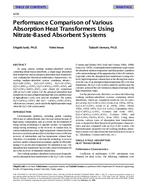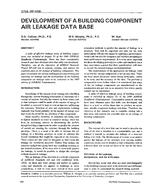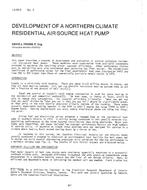It has long been known that man’s thermal sensation is related to the state of his thermoregulatory system. When exposed to a given combination of environmental variables, clothing and activity level, the thermoregulatory system adjusts the various control 1ing mechanisms to regulate the heat exchange of the body with the environment in order to maintain the deep body temperature within a narrow survival range. In hot environments the thermoregulatory mechanism brings about a redistribution of the blood flow, increasing the blood supply to the skin and raising its mean temperature. Also, the sweat glands activity is enhanced to increase the heat loss by evaporation. In cool environments, the skin blood flow is reduced, the mean skin temperatur~ falls, and the sweat glands’ activity is diminished. In addition, increased muscle tension and shivering may increase the rate of heat generation.
The main objective of the present paper is ,to present a new physiological-thermal sensation model capable of predicting thermal sensations in thermally stressful environments at activity levels from sedentary up to 6 mets (1 met = 58 W/m2).
Product Details
- Published:
- 1977
- Number of Pages:
- 15
- File Size:
- 1 file , 920 KB
- Product Code(s):
- D-CH-2435
- Note:
- This product is unavailable in Russia, Belarus


